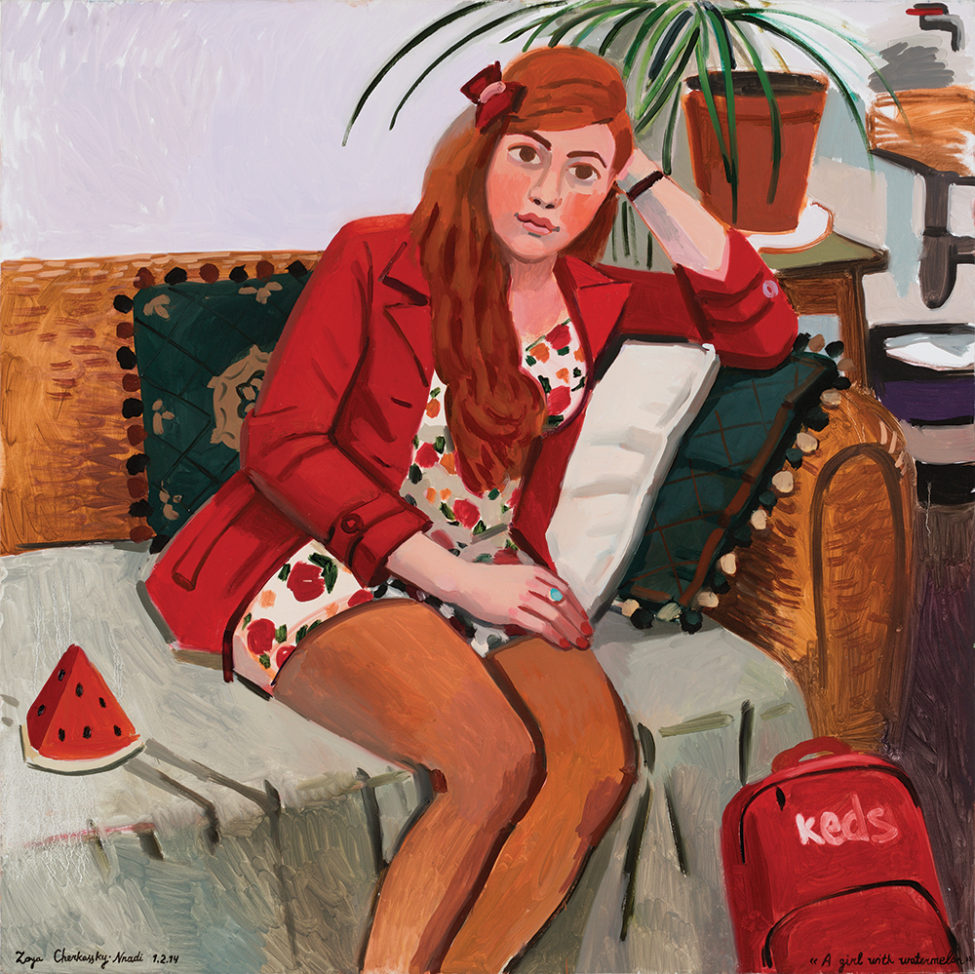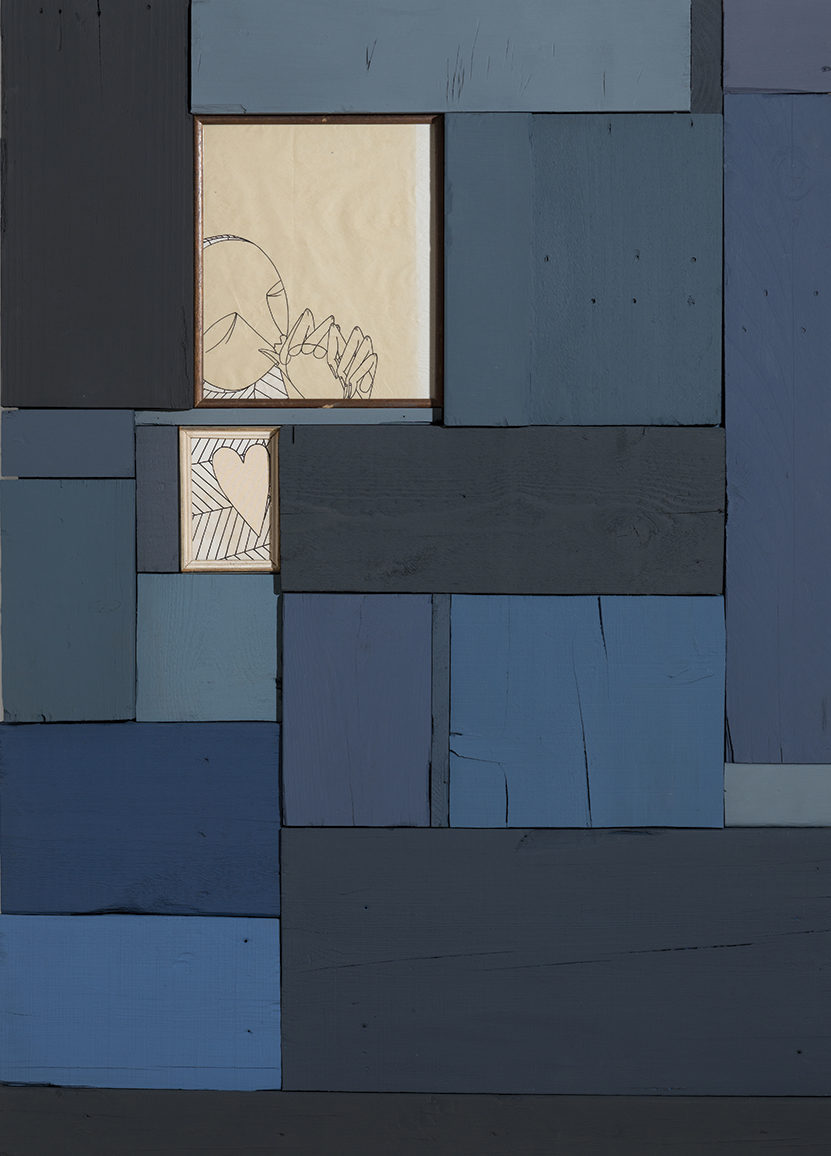HeArt: Art from the Heart
Group Exhibition
Cardiac Surgery Department
Sheba Medical Center, Tel Hashomer
Exhibition opening: 22.04.18
“All art has this characteristic-it unites people” (Leo Tolstoy)
Many times, art is necessary precisely in the unexpected places.
It is no secret that the body and the psyche form one unit and closely influence each other. No one doubts the necessity of hospitals for healing the body. Equally, no one doubts the need for museums and art and culture institutions to respond to the needs of the spirit. There is no doubting, therefore, the connection between art and health, recovery and peace of mind.
Much has been written about the healing power of art in the public sphere. Although art is secondary to the experience of hospital care, it has a significant influence on the patients, the medical staff and the visitors. Many studies have found that exposure to art helps to lessen anxiety and pain, improve the mood and render the experience more positive.
For many people the hospital becomes a temporary home. Patients and their families stay in it, sometimes for lengthy periods. The ability to give them a welcome respite from the daily treatment routine, to allow them to delve into the artworks and let their thoughts drift imaginatively and take them to other realms, contributes to the quality of recovery and serves to reinforce and complement the medical care. In places where people come to get better, unexpected avenues of communications are opened and the experience of art acquires new, empowering and surprising meanings.
No wonder therefore that in many of the medical higher education institutions the curriculum includes art studies, which help the students develop skills such as critical thinking, communication, observation and empathy.
Paradoxically, exhibiting artworks in a hospital has an advantage over exhibiting them in artistic spaces: the viewers can go back and look at them again and again in a place that remains continuously open, to experience them at any time of the day and night, to contemplate them and thus intensify their impact.
Showing art in a hospital also corresponds to the current art world trend of getting out of the conventional spaces of the museums and galleries and showing art in public spaces and in the public sphere in order to make it accessible to the general public.
The realization of this exhibition demonstrates that the Department of Cardiac Surgery, headed by Professor Ehud Raanani, is at the forefront of innovation, not only from the medical standpoint but also in less obvious aspects.
The exhibition, held this year for the fifth time, is scheduled to coincide with the festivities marking Israel’s 70th Independence Day. We have chosen to exhibit leading Israeli artists alongside young emerging ones. The works shown in the exhibition reflect different facets of the Israeli society in all its diversity. Through the artistic tools at their disposal, using different media and diverse styles, the artists seek to present the complexity of the Israeli reality.
Zoya Cherkassky turns a penetrating and brave, sometimes ironical and funny eye on the social experience in Israel. The artist, born in Ukraine, presents the Israeli reality as it was experienced by the new immigrants who arrived in the country from the former Soviet Union. The young artist Nirit Takele similarly uses her works to convey the story of the culture and heritage of the community she belongs to, the Ethiopian community, touching on sensitive social subjects at the heart of the Israeli public debate. Yonatan Gold, who was born and raised in Israel, presents everyday, even banal scenes, mostly influenced by his childhood on a kibbutz.
As a member of a family of Holocaust survivors, Gideon Rubin uses faceless portraits as a kind of commemoration, trying to somewhat dull the pain of focusing on memories by removing the facial features. Noa Yekutieli likewise deals with memory and the construction of narratives. Basing her work on photographs of natural disasters and manmade ones, such as Operation Protective Edge, she demonstrates, using a paper-cutting technique in black and white that creates a play of positive and negative, the existence of two sides to every narrative. Ofer Rotem’s paintings suggest that the reality is much more layered and complex than it seems. Through the comical creatures, strange masks and nonsense scenes hidden among the bushes in his works, the artist refers to power relations and vested interests in society. Another artist who engages with memory, identity and history is Maya Zack, who bases her work on continuing and thoroughgoing research. Through video works and drawings she wishes to confront her own private past, as well as the collective one, and prevent them from being forgotten.
Addam Yekutieli (Know Hope) started as a street artist whose works could be seen on the streets of south Tel Aviv. Today he often engages in social projects in the public sphere, both in Israel and abroad. Through the visual iconography he has developed he discusses human emotions and situations and their implications for the political and the local.
If we look at the word HEART, we see that it contains the word ART. There is no finer expression of the connection between the two, and it is seems perfectly fitting to hold an art exhibition in a place whose essence is the treatment and healing of the heart.







